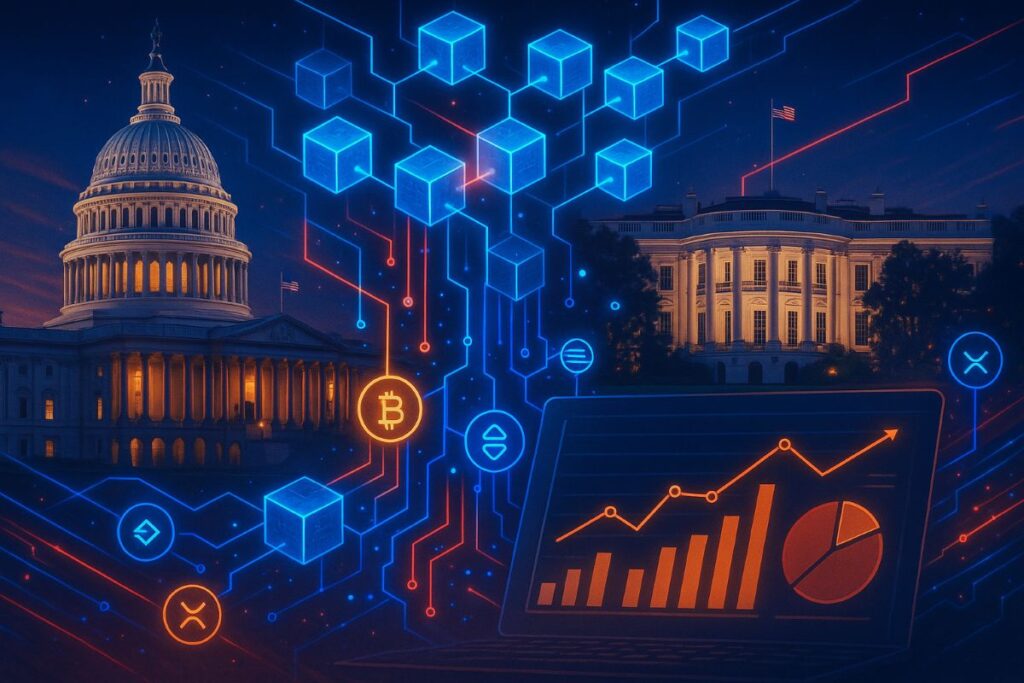In the ever-evolving landscape of technology and governance, blockchain emerges as a transformative force. An exciting development from the U.S. aims to blend public transparency with blockchain technology. Spearheaded by U.S. Commerce Secretary Howard Lutnick, this initiative introduces blockchain for enhancing data dissemination, beginning with crucial economic indicators. This visionary move reflects a broader ambition to redefine data transparency and reliability, making it a compelling aspect of modern governance. Let’s delve deeper into this groundbreaking proposal and explore its potential impact on transparency and data security.
Blockchain Revolution: U.S. Government’s Move Towards Transparent Data
Integrating Blockchain with Public Data
The proposal to publish Gross Domestic Product (GDP) data on a blockchain isn’t merely theoretical. Worldwide precedents show that blockchain can significantly enhance data integrity, authentication, and accessibility in public administration. While the U.S. government’s initiative is starting with GDP, this endeavor has the potential to expand across various economic indicators and federal agencies, increasing transparency and trust.
Sean Hannity, a prominent advocate, argues that the initiative aligns with the administration’s ‘America First’ stance, potentially utilizing platforms like Solana or XRP Ledger—networks that reflect this ethos. However, the timeline for implementation remains unspecified.
Why Blockchain for GDP?
Amid growing skepticism regarding official economic data, blockchain offers a solution by ensuring the data’s verifiability and auditability. This initiative could alleviate concerns about data manipulation, as blockchain’s immutable nature prevents unauthorized modifications post-publication. Although blockchain secures data management, accuracy depends on data collection methods rather than ledger security alone.
As a starting point, implementing blockchain for GDP data can pave the way for other economic metrics to follow suit, enhancing overall data transparency.
Legislative Support and Strategic Integration
This blockchain initiative isn’t isolated; it finds support in legislative measures like the Deploying American Blockchains Act of 2025. This bill, having passed the House, now awaits the Senate’s approval. It aims to institutionalize blockchain technology within federal operations, creating support structures and advisory panels to facilitate deployment.
The Department of Commerce is tasked with spearheading the integration of blockchain technologies, aligning with the bill’s directives. By publishing GDP data on blockchain, this legislative effort gains a practical dimension, potentially boosting U.S. leadership in blockchain adoption.
Cryptocurrency and Market Implications
This announcement has already generated positive market responses. With U.S. blockchain integration, cryptocurrencies like Solana and XRP could gain traction, further solidifying their roles in this evolving landscape. But which emerging cryptocurrencies might stand to benefit from this momentum?
Bitcoin Hyper ($HYPER): A New Layer 2 Solution
Designed to tackle Bitcoin’s scalability limitations, Bitcoin Hyper ($HYPER) offers a hybrid approach. Built on the Solana Virtual Machine, it promises high transaction throughput while maintaining Bitcoin’s security. Predictions suggest a substantial increase in $HYPER’s value, highlighting its potential as a lucrative investment opportunity.
Snorter Token ($SNORT): Revolutionizing Meme Coin Trading
Trading meme coins often entails substantial fees and complexities. Enter Snorter Token, powering a cutting-edge Telegram bot that makes meme coin trading more accessible and cost-effective. With features like copy trading and minimal fees, $SNORT could reach new heights, presenting a promising investment avenue.
Numeraire ($NMR): AI-Powered Hedge Fund
Backed by JP Morgan with a $500M investment, Numeraire leverages AI and crowd-sourced analysis to drive its crypto hedge fund. Despite recent performance dips, JP Morgan’s involvement signals potential growth, making $NMR a fascinating option for investors seeking AI-driven financial innovation.
Conclusion: Charting New Frontiers with Blockchain
The U.S. government’s initiative to publish GDP data on blockchain could establish a new standard for public data transparency. This move not only emphasizes the utility of blockchain in government but also signals potential gains for strategic cryptocurrencies like $SNORT and $HYPER. As always, thorough research is essential when navigating the volatile crypto market.
Is investing in blockchain-based economies secure?
While blockchain technology offers enhanced security and transparency, investment risks remain. Market volatility, regulatory changes, and technological challenges can impact security. Investors should conduct in-depth research and assess risk tolerance before investing.
How does blockchain improve data transparency?
Blockchain enhances transparency by providing an immutable ledger of transactions. Once data is recorded, it cannot be altered without consensus. This feature minimizes fraud and bolsters trust, making blockchain ideal for public data applications.
What are the potential benefits of government data on blockchain?
Publishing government data on blockchain can increase public trust, improve data integrity, and reduce manipulation risks. Transparent and accessible data can aid decision-making and foster economic and social benefits.
Which blockchain platforms are suitable for government use?
Platforms like Solana, XRP Ledger, and Aptos are potential candidates, given their scalability, security, and alignment with national interests. Each platform’s distinct features must be evaluated to determine suitability for governmental needs.
This detailed exploration of the U.S. government’s blockchain initiative provides a robust understanding of its scope, implications, and future prospects.

